Can something good emerge from something bad? That’s the question I asked myself two summers ago at a garden party at Harrowden Hall in Northamptonshire – now the Wellingborough Golf Club – my addled thoughts darting between the fascinating story I listened to with rapt attention, and the jaunty strains of the brass band’s rendition of ‘We’ll Meet Again’, all that jolly bunting and Panama hats, the champagne and forkfuls of quiche lorraine. The intriguing story was worthy of a Dan Brown novel, whose unlikely cast includes four exquisite and historically invaluable, if wingless, bronze angels, a Northamptonshire golf club, the Lord Chancellor Cardinal Wolsey, King Henry VIII, a brilliant associate of Michelangelo, the criminal underworld, the shadowy international art world, a brilliant Italian academic and the V&A. The mise en scene moves between Northamptonshire, London, Florence, Switzerland and Paris. And the dramatic themes are hubris, greed, larceny, tragedy and national pride; there’s even a modicum of justice – albeit one heavily shrouded in a rank and rancid murk.
Theft of the Wolsey Angels
Wolsey Angels at Harrowden Hall
The story begins in 1988 with what was then thought to be the unremarkable theft of two heavily weathered bronze angels, taken from the gate piers of the grand 18th century Harrowden Hall. Neither the golf club (owners of the Hall since the 1970s), nor the police were overly concerned about the theft. It was thought that more than likely the statues were stolen for their metal content, and as there was and is no international art loss register worth its salt, the theft was soon forgotten.
David Waite, the golf club’s general manager, explains: “I suppose thefts like that happened all the time and we didn’t think that much of it. We just assumed they were a couple of ordinary lead statues. Nobody knew much about them except that they were part of the listing of the building.” In fact nobody even knows how they got to Harrowden Hall in the first place – a fact that becomes significant later in the story – as the documentary trail stops dead in its tracks in the 17th century. David Waite continues “Bizarrely only two were stolen. The remaining two angels were then moved into the Hall for safety. They stood for some years in one of the rooms on a couple of plinths. Because they were part of the listing of the grade I building they were frankly considered an inconvenience. People would hang their coats on them as they didn’t mean much to anyone at the golf club.”
Wolsey Angels Appeal
But fortunately for the golf club – and also for the nation – all four angels have now been united and identified as being of incredible national and cultural significance, the like of which rarely happens in a lifetime. The angels were to be the adornments of a magnificent tomb for Cardinal Wolsey, pre-eminent statesman and King Henry VIII’s closest advisor – and are worth an absolute fortune. Their discovery is remarkable in that they were thought to be lost in the 17th century, which is the last time we hear about them until only recently. In order to secure these treasures for the nation the V&A has launched a public fundraising appeal to meet half of the purchase price. The remaining £2.5 million has already been met by the National Heritage Memorial Fund and the Art Fund.
Two of Wolsey’s Angels, on temporary display at the V&A, with Paul Jesson, who plays Cardinal Wolsey in the RSC adaptions of Hilary Mantel’s books. Photograph: Paul Grover
The campaign is enthusiastically supported by Hilary Mantel the author, whose Booker Prize-winning novel, Wolf Hall centres on the troubled relationship between the King and his chief minister. “Thanks to the discovery of Wolsey’s angels, a great Englishman we have forgotten may have his monument at last,” Mantel said. “The recovery of Wolsey’s angels is one of those miracles that historians pray for; something that seems irrevocably lost has been there all the time. To claim the angels for the nation would connect us to one of the liveliest eras of our history and one of its most remarkable men.” Paul Williamson, the curator responsible for the angels at the V&A told me that he believes “they are works of the first importance in terms of the British national heritage, being associated both with Cardinal Wolsey – the most famous ecclesiastic at the first half of the 16th century – and then Henry VIII. You can’t get much more heritage than that can you?”
Cardinal Wolsey – Hubris and Tragedy
The link with two of the most powerful men in Tudor history is remarkable enough, but their significance doesn’t end there. The angels are some of the few surviving elements of a magnificent, Renaissance-style tomb that Wolsey had commissioned for himself as a lasting legacy to his achievements only six years before his death. The metre high angels were to be gilded and spectacularly positioned atop four richly decorated 2.75m bronze columns. At the centre of the arrangement was to be Wolsey’s black and white marble tomb chest that was to be decorated with a rich bronze cloth and metal foliage. This was then surrounded by twelve bronze saints and four nude putti, heraldic shields and four further kneeling bronze angels. It is a pity that we don’t know the proposed location of this tomb, but it’s likely to have been York Minster or perhaps Christ Church, Wolsey’s Oxford College.
Reconstruction of Rovezzano’s Design for Cardinal Wolsey’s Tomb
What is immediately clear, is the extraordinary hubris displayed by Wolsey, the son of a butcher, who had risen to the highest offices of state and become a prince of the church. Renaissance art expert professor Francesco Caglioti points to the fascinating symbolism of Wolsey’s choice of candle carrying angels, that had in Italy become a feature of eucharistic altars. And so “with as many as four angels of that type, the Wolsey mausoleum was transformed into a holy ark or a place of perpetual veneration.” He believes that “Wolsey’s tomb would have been – if realised – one of the greatest and largest mausoleums in Renaissance Europe. The exceptional even revolutionary character of Wolsey’s tomb, surpasses anything that had been seen before in England.” You can see this in the unprecedented grandness of the design of the tomb, it’s demanding artistry as well as the sheer wealth of materials used, that easily outstrips anything ever before seen in England and perhaps Europe. Moreover it was to cost more than twice the amount the King himself had spent on his father’s tomb and required twice as much artistry. Outshining the monarch, particularly one as capricious and brutal as Henry VIII was obviously never going to be a wise move, as Wolsey was soon to discover, perhaps even contributing to his dramatic undoing.
Touched by Michelangelo
Few Italian sculptors were working in England in the Renaissance which had therefore taken a distinctly individualistic path. This was all soon to radically change principally because of the work of two extraordinary men working on two extraordinary tombs: The first was Pietro Torriagiano, whose self-destructive nature led him to flee Italy for England, after he had broken Michelangelo’s nose in a fit of pique. He was recruited by Henry VIII to create perhaps the first truly Renaissance monument in England with his double tomb for the King’s parents at Westminster.
Henry VII tomb by Pietro Torriagiano, Westminster Abbey
Benedetto da Rovezzano
The second was Benedetto da Rovezzano (1474-1554), a highly celebrated sculptor of the Italian Renaissance, whom Torriagiano had recruited to work on the High Altar in the Henry VII Chapel in Westminster Abbey. It was Rovezzano who had then created the angels when Wolsey commissioned him to work on his tomb in 1524. “So we can assume” says Caglioti “that all that we see of Italian influence in English 16th century sculpture derives principally from the atelier of Rovezzano and his activities in England from his base at the centre of London at Westminster.” Quite impressive for a man who has largely gone unnoticed by scholars in England until now.
Vasari’s roll-call of the very best artists of the day mentions Rovezzano as being “among our most excellent craftsmen” as quite simply, he was the most important artist working in metal at the beginning of the 16th century. In fact he was even superior to Michelangelo in this medium, replacing the latter in a state commission for a bronze David (now lost). “The very proximity of Rovezzano to Michelangelo is sufficient to demonstrate his importance as an artist” says Caglioti. So when he came to England and worked here for over a quarter of a century for both Cardinal Wolsey and the King, he had already established the very highest reputation for himself in Italy and France for his work in both marble and bronze.
But tragedy soon struck first Wolsey then Rovezzano. The Cardinal dramatically fell out of favour with the King when he failed to secure Papal approval for the annulment of Henry’s marriage to Catherine of Aragon. The once great alter rex who had rivalled the King in both wealth and power, and certainly outdid him in sophistication and learning, was stripped of his posts and property including Hampton Court, and all the treasured elements of his tomb. Before Wolsey could be indicted for the trumped up charge of treason, he died of natural causes en route to London, and was buried without ceremony in Leicester Abbey in 1530. Adding insult to injury, Wolsey’s last resting place may then have been destroyed during Henry’s dissolution of the Abbeys. Quite ironically therefore, far from resting in the most magnificent mausoleum in Europe, a place of veneration and awe designed to commemorate a truly exceptional life in service, Cardinal Wolsey’s bones are lost without a trace.
Cardinal Wolsey by an unknown artist. Late 16th century, oil on panel.
Henry VIII – Tomb Raider
With Wolsey out of the way, Henry duly confiscated all the completed elements of his tomb. Never to be outdone, he employed Rovezzano to complete and indeed amplify them for himself into an even grander and more intricate design. No expense was to be spared for the tomb which would include a sarcophagus for his favourite wife Jane Seymour – who alone among his many wives had borne him a surviving son. There were to be ‘fine Oriental stones’, four tall bronze candlesticks, life-size gilded effigies of the King and Queen, as well as another statue of the King on horseback under a triumphal arch. One hundred and thirty four other figures were to be added including saints, apostles and putti and scores of other extravagant elements. And how surprising that it doesn’t appear to have bothered the man responsible for the English Reformation, and the wanton destruction of abbeys and monasteries, that his great ambition was to be buried in a decidedly Italianate and Roman Catholic style tomb, complete with an altar where daily mass was to be said for his soul.
Portrait of Henry VIII aged 49 by Hans Holbein, 1540. Right: Henry VIII’s tomb ©The Dean and Canons of Windsor
Rovezzano worked tirelessly on this ambitious project for the King throughout the 1530s, but the hazardous working conditions at the foundry were to take a tragic toll. Rovezzano’s eyesight was rapidly deteriorating, and he was soon forced to abandon his great lifetime’s work. He left for Florence around 1540. Having turned completely blind by 1548, he was given a life annuity by the Vallombrosa monks and died in 1554. “You can see a sort of second tragedy in the relationship with the tomb in European Renaissance. The other tragedy was the tomb of Pope Julius II and Michelangelo” says Cagliotti, referring to the project that became one of the great disappointments of Michelangelo’s life when the Pope, for unexplained reasons, interrupted that commission.
Royal Hubris, Divine Justice and the Disappearing Angels
However in a bizarre twist of fate, Henry’s monumentally hubristic plans for his tomb that had even outdone those of Wolsey – and indeed any other European monarch – were also to come to nothing. Like Wolsey, Henry VIII’s remains were also to be lost and forgotten. Henry was interred at his death in 1547 – along with Jane Seymour – in an underground vault in St George’s Chapel Windsor, as a temporary measure until the great monument was completed. However all three of Henry’s children failed to honour his will to construct the costly tomb. And so he has remained in a nondescript – and until the 19th century – unmarked vault. In a curious development Henry VIII’s anonymous resting place far away from London, was also considered the perfect location for the recently decapitated remains of Charles I, to which the troublesome King was unceremoniously added in 1649. A little later a stillborn child of Queen Anne was also laid to rest in the vault, which if marked, might have been ‘miscellaneous’.
And here they all remained in complete obscurity. The vault’s exact location forgotten over the years, and only accidentally rediscovered by workmen in 1813. It was only in 1837 on the orders of William IV, that a simple marble slab was finally placed to mark the burial place of the two famous – or perhaps infamous – Kings, and others. A sketch by Alfred Young Nutt, a surveyor who was present at the opening of the tomb in 1888, to replace body parts of Charles I that had been gruesomely removed as souvenirs in 1813, depicts King Henry VIII’s lead coffin as so badly broken that even his remains are partially visible. The small crumbled and crowded vault is clearly in a pitiful and thoroughly neglected state. How extraordinarily ironic that a King who lived so magnificently and aspired to outdo even Augustus Caesar in the magnificence of his tomb, should now lie in a shattered coffin within a small, plain, unkempt vault, marked only by a simple marble slab.
Memorial slab commemorating the burial of Henry VIII in the Quire of St George’s Chapel. Right: Watercolour by A.Y.Nutt of the vault containing Henry VIII’s remains, 1888
In a further irony, the unassembled elements of the cursed tomb were to join Henry at St George’s Chapel Windsor in 1565, in a glorified and yet also sorry storage. Here they languished for 85 years until the tumultuous events of the Civil War that finally saw them scattered, melted down or sold off to fund the war. The Bishop of Ghent purchased 4 candlesticks that Rovezanno had made for Henry VIII’s tomb, that are still at the Cathedral of St Bavo in Belgium (replicas of two of these candles can now be seen in St George’s Chapel next to the high altar). Only the black stone chest remained, which over a century and a half later in 1808, was to be used as the centrepiece of Horatio Nelson’s tomb in St Paul’s Cathedral, where it can still be seen today. As for Wolsey’s angels, their location – and indeed whether they had even survived – remained unknown.
Tomb of Lord Nelson in St Paul’s Cathedral
The Heritage Jackpot
Unknown also to Sotheby’s, even as the two stolen angels stared them in the face six years after their theft in 1994. Unbeknown to the golf club, the unwitting auction house sold them for a mere £12,000, having failed to recognise their significance. In fact Sotheby’s didn’t even bother to photograph them in the catalogue, listing them simply as being “in Italian Renaissance style”. Who sold the angels and to whom remain a mystery however, as the notoriously unregulated art market is permitted to remain opaque on such matters. But perhaps Sotheby’s could be partially exonerated if the two stolen angels had already undergone their unfortunate ‘restoration’ into the shiny made yesterday finish that we find them in today, in contrast to the rain streaked and time-worn patia of the other two. But unfortunately when they were restored, by whom and – perhaps significantly – for what reason – remain as much a mystery as who bought them, who sold them and who stole them. We do however know that the prominent Parisian antiques dealer Guy Ladriere owns the angelic pair today and after years of storage in Switzerland is attempting to sell them to the V&A, although his gallery is not admitting it. The gallery administrator I spoke with denied any knowledge of the angels, and Guy Ladriere has so far refused to comment to us on questions such as when and how he acquired the angels.
Benedetto da Ravezzano, Candle-bearing Angels, for the tomb of Cardinal Wolsey, later that of Henry VIII, ca. 1524-29. Private collection
Bursting through all of this depressing murk like an angelic shaft of light from the land of Rovezzano no less, is the eagle-eyed figure of Francesco Caglioti professor of fine art at Naples University. After centuries of obscurity it is the good professor who finally and definitively discovered Wolsey’s lost angels. “This discovery is one of the most important episodes of my life” explains Caglioti. “I first saw them in the Spring of 2002, presented to me by Ladriere their owner. He told me that he had shown the angels to many colleagues of mine English and American, and all had said that they did not understand them or thought them to be Victorian. I should say I immediately recognised them as by Rovezzano. Within a couple of days I recovered the English Victorian bibliography on this issue, discovering that there was full documentary confirmation of that.”
Francesco Caglioti professor of fine art at Naples University
Not unlike Dan Brown’s academic hero Robert Langdon, Caglioti has been responsible for discovering quite a few significant treasures. Just recently during the summer of 2010, whilst casually wandering around Burghley House in Lincolnshire “as a simple tourist”, the professor spotted a wrongly attributed marble bust of Jesus, as a masterpiece by Pietro Torrigiano. The English-Italian Renaissance is certainly a lot clearer thanks to the intrepid professor.
It was only five years later at a conference in Florence in 2007 that Caglioti finally published his findings, by which time he had successfully amassed sufficiently compelling evidence of stylistic comparisons with Rovezzano’s earlier Florentine work. The uncommonly comprehensive and detailed inventory made on the pieces of the tomb in 1530 when Wolsey’s possessions were sequestered by Henry VIII, have also helped confirm Caglioti’s discovery.
The far and away most important development however – that has fully confirmed Caglioti’s theory – was the uncovering of the other two angels at Harrowden Hall, at that same Florentine conference. Professor Caglioti explains, “a couple of colleagues who had heard my presentation said to me after the conference, but perhaps you should compare them with two strange bronze angels that are unpublished which are at Harrowden Hall. I tried to obtain an old article in Country Life on this house and immediately noticed that they were the third and fourth angels. So after some months I was there and I spoke with some people there. This was for me the last fragment of evidence of this mosaic.”
It’s a Mad Mad Mad Mad (Art) World
It is no wonder that Hilary Mantel has referred to the discovery of all four angels as “miracles”, as frankly the discovery of the two remaining Angels at Harrowden Hall can’t be comfortably explained at all. When I asked Paul Williamson at the V&A how the remaining two angels could be ‘discovered’ if there is a documentary dead-end from the time of the Civil War, and if therefore there is no known evidence linking the angels with Harrowden Hall, he simply replied “I don’t know”, followed by a lengthy silence. Caglioti similarly responded that he didn’t know how his colleagues had known about the two Harrowden angels – then acting as glorified coat stands at the golf club – but he did offer up an interesting hypothesis: “They are colleagues linked with the activity of Sotheby’s and Christies and the world of art auctions. This is the strange part of this story. Only at the end of this reconstruction, I understood that something strange had happened at Harrowden Hall which concerned the first and second angels owned by Ladriere, which had been sold at Sotheby’s and were not recognised at all. So evidently somebody knew that the two Sotheby’s Ladriere angels were linked through Sotheby’s to the Harrowden provenance. I believe that Ladriere had bought the two angels immediately before showing them to me. I don’t know where they had been between the Sotheby’s auction and Ladriere’s possession of them. But evidently somebody in the English art historical world had known very well that the Sotheby’s angels were from Harrowden Hall. But this had remained completely unknown to me and to Ladriere and also to Anthony Radcliffe who was the keeper at the V&A at the time, until that is the conference at Florence.”
Benedetto da Rovezzano, Candle-bearing Angels, for the tomb of Cardinal Wolsey, later that of Henry VIII, ca. 1524-29. Harrowden Hall, Northamptonshire
So can something good emerge from something bad? Well Paul Williamson of the V&A certainly seems to thinks so, noting that “if the two angels hadn’t been stolen, they would still be unrecognised and on the gateposts at Harrowden and nobody would know what they were.” He’s got a point. Three hundred and fifty years after they disappeared, the angels’ spectacular reappearance has certainly enriched the nation, at a time when there is also renewed interest in this epochal period of English history, even if it did take a crime for that ‘discovery’ to happen. Then there’s the golf club that is also at least £2.5m better off – the theft and a statute of limitations on stolen art that prevents their recovery notwithstanding.
There is however a fly in the ointment: the NHMF, Art Fund and V&A have pledged public money, charitable funds and urged the public to donate in their Wolsey Angels Appeal, even though there are some significant unanswered questions surrounding the reappearance of the angels. Of course these public and charitable organisations are in an invidious position, having to maintain professional practices of unassailable probity whilst navigating the notoriously murky and shark-infested waters of one of the least regulated of markets. But surely art cannot be recovered at any cost, however important the prize – even the heritage jackpot.
Meanwhile art theft has soared to nearly £4b pa, placing it among top international crimes, after drugs, money-laundering and the sale of illegal weapons; while the recovery rate is only a miserable 1.5%. Unwillingness to regulate the art market and the market’s lack of transparency, low police priorities on art theft and – unbelievably – the ongoing absence of a government-run database of stolen works, is summoning up a perfect storm by simultaneously heating up that market as well as fuelling art theft. A situation that is bound to be more pressing as ‘greater fools’ bring us ever closer to achieving $1b art auction sales.
And if the V&A is in an invidious position, so too are we the public. Do we donate to the campaign unsure of who and what we are rewarding. Or do we risk losing at least two of the angels forever, just when they have been reunited for the first time in centuries? Its a tough choice and it’s up to you. The reappearance of the angels is indeed momentous, but it’s difficult to celebrate when there are so many demons not yet exorcised.
The World’s Most Expensive Stolen Paintings





















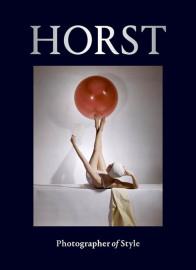
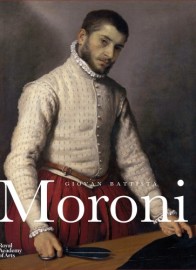
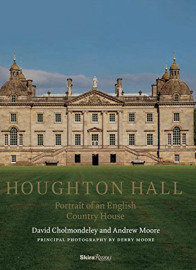
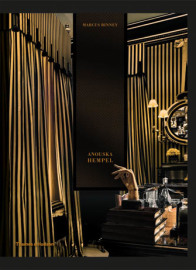
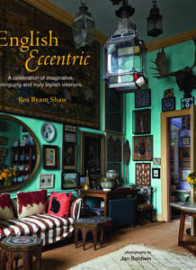
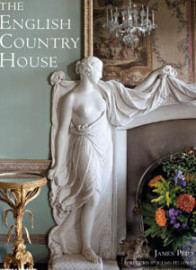
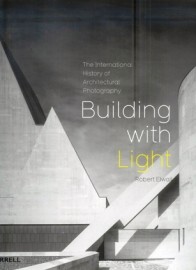

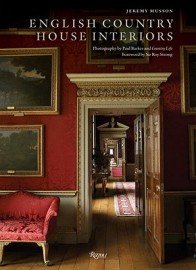
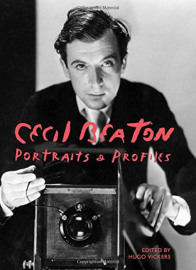
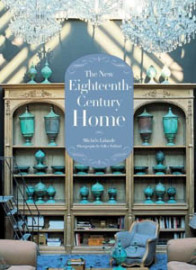
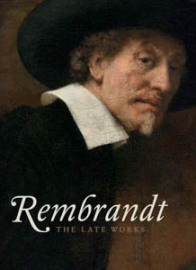
Priya Khanchandani via Twitter @Hiyapriya
@GDCinteriors This is a fantastic read.
Captivating read, hard hitting ! Hope it cracks open a few monoliths and reveals the TRUTH.